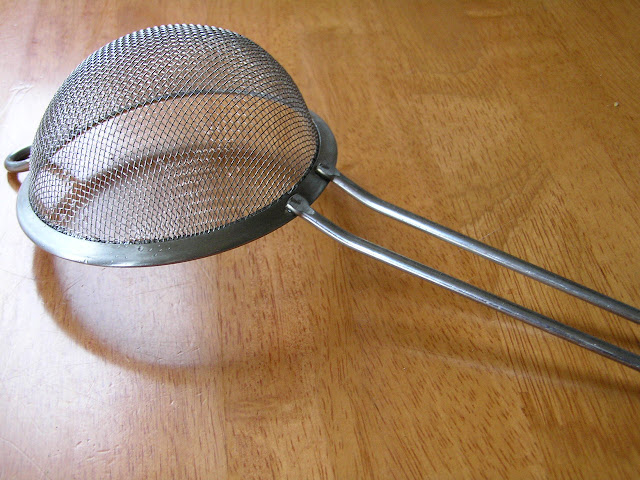Sprouting For Winter Vegetables: A Tutorial
This is the time of year when sprouts are a great organic, locally grown and affordable green vegetable. They'll grow year round, of course, but fresh greens from other sources are harder to come by in winter, making sprouts a better fresh, local option.
My favorite ways to eat sprouts are on sandwiches or in wraps. They go perfectly in nori rolls and in salads as well. Using them is easy, and growing them requires only a short soaking time to wake the seeds up, and then twice daily rinses until they reach the desired maturity.
It's pretty economical to buy alfalfa and clover seeds by the pound, especially when you consider how long a pound will last and how much greens it will provide. A mere tablespoon of seed produces a brimming quart full of fresh sprouts. Not only that, but homegrown sprouts cost pennies compared to the kind you can buy in plastic tubs.
I buy lentils and grains in much larger bags. They keep fine in a dark, cool cabinet. Sproutpeople.org gives specific storage life for each type of seed. I don't get my seeds from them, but they do have great information. Also, I always buy organic seeds for sprouting. Organic seed will yield the best sprouting rate, as well as the healthiest sprouts.
Alfalfa and Clover are my favorite all-purpose sprouts, but many other seeds can make wonderful sprouts as well, including lentils, broccoli seeds, sunflower seeds, and mung beans. Radish sprouts are too spicy for me, but you might love them. Their spiciness can be minimized by mixing with other seeds.
Things like wheat and chickpeas can be sprouted, but I don't think they really make a digestible raw vegetable like the other types of sprouts. I do have a wonderful hummus recipe using cooked sprouted chickpeas, as well as a simple roasted sprouted chickpea recipe. I also sprout wheat daily to feed our rabbits & chickens.
Basically, all seeds sprout the same way. They need a simple soaking in dechlorinated water (which you can easily make yourself) for a few hours or up to overnight. Then, during their growth phase, they need to be rinsed and drained twice a day. Besides the water and seed, you will only need a quart jar and a cloth or screen for the top of the jar.
Here is a photo-tutorial:
Alfalfa and clover sprouts are ready when all the leaves are deep green. Larger seeds like legumes and grains are usually eaten when the sprout "tail" is as long as the seed itself.
I really recommend this website, sproutpeople.org, which has tutorials, stats, and instructions for sprouting every kind of seed you can think of. I referred to it frequently when I was just getting started sprouting.
A Note on the Safety of Sprouting:
When I first started sprouting I did a lot of research into the safety of alfalfa sprouts, having heard once that they really aren't all that good for you because of chemicals they produce. The conclusion I came to was that they are perfectly safe as long as they aren't your sole source of calories, and also that allowing the leaves to fully green up minimizes any harmful chemicals. We choose to eat them weekly or a couple times a week and not to worry a bit. All foods contain some kind of dangerous element; that's why we eat a variety of whole foods and don't eat any one thing to excess.
I've also heard about the dangers of bacteria growing on sprouts. Any moist environment can provide a home for bacteria. This might be a concern for immune suppressed individuals, particularly with the sprouts sold at the grocery store. One might wonder, how long have they been in the package? How have they been handled? Who has been touching them? Storebought sprouts may not be safe, but I will trust my homemade sprouts, carefully rinsed morning and night, and made under conditions that I control and am witness to.
Also, seeds, nuts and grains are rendered more digestible by soaking and sprouting. In fact, we've stopped eating most seeds, nuts, grains, and legumes unless they've been soaked or sprouted. This soaked grains breakfast cake is one delicous recipe I came up with to make our whole grains more digestible. I think the benefits of sprouting far outweigh any risks.
Check out my articles on wild foraging (edible weeds, and wild foraging in April) and harvesting weeds in the garden, to see how we find sustainable, healthy greens throughout most of the year.
We purchase our organic seeds for sprouting from Azure Standard, a natural foods distributor. Below are Amazon Affiliate Ads. Any purchase made through them helps support our family. Thanks in advance!
My favorite ways to eat sprouts are on sandwiches or in wraps. They go perfectly in nori rolls and in salads as well. Using them is easy, and growing them requires only a short soaking time to wake the seeds up, and then twice daily rinses until they reach the desired maturity.
 |
| Lentil sprouts and sprouted sunflower spread make a great nori roll. |
I buy lentils and grains in much larger bags. They keep fine in a dark, cool cabinet. Sproutpeople.org gives specific storage life for each type of seed. I don't get my seeds from them, but they do have great information. Also, I always buy organic seeds for sprouting. Organic seed will yield the best sprouting rate, as well as the healthiest sprouts.
 |
| Alfalfa and Red Clover seeds. They are very similar, and the sprouts, to me, are interchangable. I rotate which ones I make each week just to vary the nutrients. |
Alfalfa and Clover are my favorite all-purpose sprouts, but many other seeds can make wonderful sprouts as well, including lentils, broccoli seeds, sunflower seeds, and mung beans. Radish sprouts are too spicy for me, but you might love them. Their spiciness can be minimized by mixing with other seeds.
Things like wheat and chickpeas can be sprouted, but I don't think they really make a digestible raw vegetable like the other types of sprouts. I do have a wonderful hummus recipe using cooked sprouted chickpeas, as well as a simple roasted sprouted chickpea recipe. I also sprout wheat daily to feed our rabbits & chickens.
 |
| Salad with sprouts, egg, avocado, homemade mayonnaise, and dulse flakes. |
Here is a photo-tutorial:
 |
| Measure about a tablespoon of seed for each quart jar. You can use 1/3 cup when sprouting lentils. |
 |
| Soak in dechlorinated water for best results. Soaking time can vary, but my rule of thumb is small seeds and nuts only need about 4 or 5 hours, while grains and legumes need overnight soaking. |
 |
| After soaking, pour through a strainer and rinse with tap water. |
Alfalfa and clover sprouts are ready when all the leaves are deep green. Larger seeds like legumes and grains are usually eaten when the sprout "tail" is as long as the seed itself.
I really recommend this website, sproutpeople.org, which has tutorials, stats, and instructions for sprouting every kind of seed you can think of. I referred to it frequently when I was just getting started sprouting.
A Note on the Safety of Sprouting:
When I first started sprouting I did a lot of research into the safety of alfalfa sprouts, having heard once that they really aren't all that good for you because of chemicals they produce. The conclusion I came to was that they are perfectly safe as long as they aren't your sole source of calories, and also that allowing the leaves to fully green up minimizes any harmful chemicals. We choose to eat them weekly or a couple times a week and not to worry a bit. All foods contain some kind of dangerous element; that's why we eat a variety of whole foods and don't eat any one thing to excess.
I've also heard about the dangers of bacteria growing on sprouts. Any moist environment can provide a home for bacteria. This might be a concern for immune suppressed individuals, particularly with the sprouts sold at the grocery store. One might wonder, how long have they been in the package? How have they been handled? Who has been touching them? Storebought sprouts may not be safe, but I will trust my homemade sprouts, carefully rinsed morning and night, and made under conditions that I control and am witness to.
Also, seeds, nuts and grains are rendered more digestible by soaking and sprouting. In fact, we've stopped eating most seeds, nuts, grains, and legumes unless they've been soaked or sprouted. This soaked grains breakfast cake is one delicous recipe I came up with to make our whole grains more digestible. I think the benefits of sprouting far outweigh any risks.
Check out my articles on wild foraging (edible weeds, and wild foraging in April) and harvesting weeds in the garden, to see how we find sustainable, healthy greens throughout most of the year.
We purchase our organic seeds for sprouting from Azure Standard, a natural foods distributor. Below are Amazon Affiliate Ads. Any purchase made through them helps support our family. Thanks in advance!

















